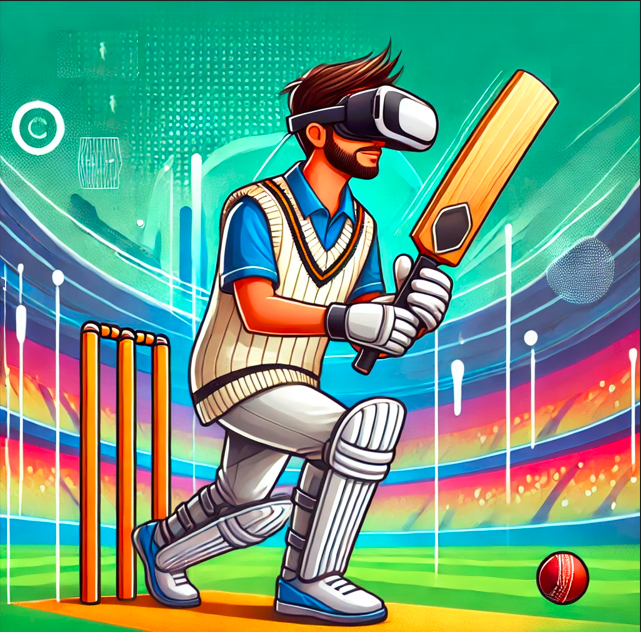Discover how VR cricket is reshaping sports training with immersive technology. Explore its role in player development, skill enhancement, and mental conditioning.

The Future of Sports Training: Virtual Reality in Cricket
Cricket, a sport celebrated for its balance of tradition and innovation, is embracing the digital age with open arms. Among the latest advancements, Virtual Reality (VR) has emerged as a groundbreaking tool, redefining how players prepare, train, and perform. VR cricket, with its immersive simulations and data-driven insights, is paving the way for a future where technology and athleticism intersect seamlessly.
This revolutionary approach to sports training is not only improving individual performance but also changing the way teams strategize and compete. In the coming years, VR cricket is set to become an integral part of player development, making training smarter, safer, and more inclusive.
Enhanced Skill Development with Virtual Reality Cricket
VR cricket enables players to practice in environments that mimic real match conditions, eliminating traditional barriers such as weather, venue availability, or physical limitations. With VR systems, batsmen can face the world’s fastest bowlers, learning to adapt to varying speeds, spins, and trajectories—all from the safety of a virtual environment.
For bowlers, VR offers the chance to test different deliveries and perfect their line and length. By practicing against virtual batsmen with varying techniques, bowlers can refine their accuracy and develop new strategies for real-world matches. These simulations provide players with invaluable experience, enabling them to react more effectively during live games.
Data-Driven Insights for Personalized Training
One of the most impactful aspects of VR cricket is its ability to deliver real-time feedback. Through integrated sensors and AI-powered analytics, players and coaches can access detailed performance metrics, such as shot timing, footwork precision, or bowling speed.
For example, a batsman struggling with specific deliveries can analyze their posture and timing in the virtual environment, identifying areas for improvement. Similarly, bowlers can use the data to study their arm angles, release points, and overall mechanics. This level of customization ensures that every training session addresses the unique needs of each player, accelerating progress and minimizing weaknesses.
Mental Conditioning Through Virtual Simulations
Cricket is as much a mental game as it is a physical one. Pressure-filled moments, such as chasing a target in the final over, can test even the most seasoned players. VR cricket allows athletes to prepare for such situations by recreating high-pressure scenarios in a virtual environment.
For instance, a batsman can simulate batting in a packed stadium during a championship final, complete with crowd noise and competitive tension. This helps players build focus, confidence, and mental resilience, ensuring they remain composed under real-world pressure.
Teams can also use VR to simulate the playing styles of rival opponents. By practicing against these virtual representations, players gain insights into their opponents’ strengths and weaknesses, giving them a strategic edge on game day.
Making Cricket Training More Accessible
One of the most exciting prospects of VR cricket is its potential to democratize training. Traditional cricket coaching often requires access to specialized facilities and expert coaches, which can be difficult to obtain for players in remote or underprivileged areas.
With VR technology, aspiring players need only a headset and basic equipment to train effectively. This accessibility can help identify hidden talent and provide opportunities for players to refine their skills, regardless of their geographical or financial circumstances. Moreover, VR-based coaching platforms can connect players with experts from around the globe, ensuring that guidance is no longer limited by location.
Reducing Injuries Through Virtual Practice
Cricket is a physically demanding sport, and injuries are a constant concern. Overtraining or unsafe practice conditions can lead to long-term physical issues. Virtual Reality cricket offers a safer alternative by simulating high-intensity scenarios without the associated physical risks.
For example, bowlers can practice delivering yorkers or bouncers without putting strain on their joints. Similarly, fielders can work on diving catches and boundary saves without risking injury. By reducing wear and tear during training, VR helps players maintain peak physical condition and extend their careers.
check out the for men’s hoodies: https://fab-chat.com/corteiz-pioneering-a-bold-era-in-streetwear/
0 Comments